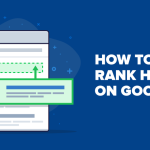What are cloud payments?
Cloud payments refer to the use of internet-based platforms to make and receive payments. In other words, it is a way of paying for goods and services using the internet. There are many different types of cloud payment platforms, but they all have one thing in common – they allow users to make and receive payments without the need for a traditional bank account.
There are many benefits of using cloud payments. For businesses, it can help to reduce costs and speed up transactions. For consumers, it can offer a more convenient way to pay for goods and services. In this guide, we will take a closer look at cloud payments and how they work.
How do cloud payments work?
There are two main types of cloud payment platforms: those that use a centrally-hosted platform and those that use a peer-to-peer (P2P) network.
Centrally-hosted cloud payment platforms are operated by a single company. This company will typically offer a range of products and services that can be paid for using the platform. The most popular centrally-hosted cloud payment platforms include PayPal and Stripe.
Peer-to-peer (P2P) cloud payment platforms, on the other hand, are operated by a network of users. These platforms allow users to send and receive payments without the need for a central authority. Bitcoin is the most popular P2P cloud payment platform.
What are the benefits of using cloud payments?
There are many benefits of using cloud payments, both for businesses and consumers.
Some of the main benefits of using cloud payments include:
- Reduced costs: Cloud payment platforms can help businesses to reduce the costs associated with traditional payment methods, such as credit card fees.
- Faster transactions: Cloud payments are typically processed much faster than traditional payment methods. This can be beneficial for businesses that need to receive payments quickly.
- Increased convenience: Cloud payments offer a more convenient way to pay for goods and services. For example, consumers can use cloud payments to make purchases online without the need for a bank account.
- Improved security: Many cloud payment platforms offer enhanced security features, such as fraud prevention tools. This can help to protect businesses and consumers from costly scams.
What are the risks of using cloud payments?
There are some risks associated with using cloud payments, but these are typically much lower than the risks associated with traditional payment methods.
Some of the main risks of using cloud payments include:
- Cybercrime: As with any online platform, there is a risk that cloud payment platforms could be targeted by cybercriminals. However, most reputable platforms have robust security measures in place to protect against this.
- Fraud: There is also a risk of fraud when using cloud payments. However, this risk can be mitigated by using reputable platforms and taking steps to protect your own information.
- Loss of funds: If you lose your login details or your account is hacked, there is a risk that you could lose the funds in your account. However, most cloud payment platforms offer some form of protection against this.
What are the different types of cloud payments?
There are many different types of cloud payment platforms, but they can broadly be divided into three main categories:
- Digital wallets: A digital wallet is a type of cloud payment platform that allows you to store your payment information in one place. This can include your credit card details, bank account information, and loyalty program points. Popular digital wallets include Apple Pay and Google Pay.
- Invoice payments: Invoice payments are a type of cloud payment that allows businesses to send invoices to their customers and receive payments electronically. This can save businesses time and money by eliminating the need for paper invoices.
- Marketplace payments: Marketplace payments are a type of cloud payment that allows businesses to sell products and services through online platforms. This can include platforms such as Amazon and eBay.
What are the different types of cloud payment providers?
There are many different types of cloud payment providers, but they can broadly be divided into three main categories:
- Merchant service providers: Merchant service providers are companies that provide businesses with the ability to accept electronic payments. They typically charge a fee for their services.
- Payment processors: Payment processors are companies that process electronic payments on behalf of businesses and consumers. They typically charge a fee for their services.
- Payment gateways: Payment gateways are companies that provide businesses with the ability to accept electronic payments. They typically do not charge a fee for their services.









